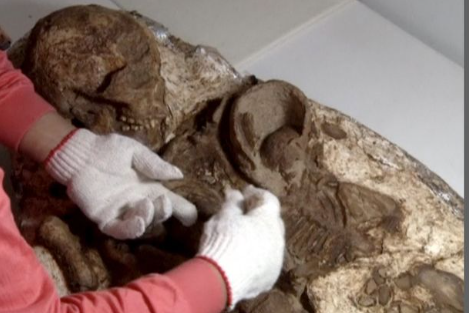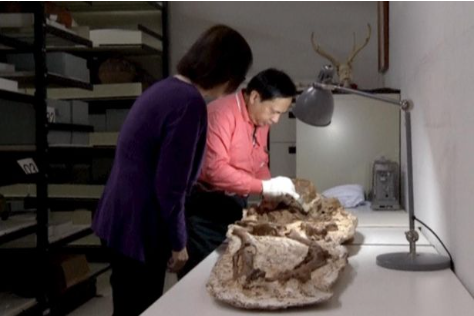
The maternal moment was a startling discovery for researchers, who claim that these Stone Age artifacts represent the earliest evidence of human activity discovered in central Taiwan.
The corpse discovered in the Taichung region depicts a young mother looking down at the child she is holding, preserved for almost 5,000 years.
The fossils’ ages were ascertained by researchers using carbon dating, which allowed them to place the fossils in the Neolithic Age—a time span that was part of the Stone Age.
Archaeologists started excavating in May 2014 and finished the work within a year. However, one pair of remains stood out from the others among all the remains discovered in the old burials.
“All of the staff members and archaeologists were shocked when it was discovered.”
Why? Chu Whei-lee, a curator in Taiwan’s National Museum of Natural Science’s Anthropology Department, explained that this was because the mother was staring down at the child in her hands.
Measuring only 160 cm (5 feet 2 inches), the mother was short, according to the experts. The baby in her arms is little over a foot and a half tall, at 50 centimeters.

Although the researchers were taken aback by this amazing finding, it is not the first of its sort.
Similar remnants that have been kept for thousands of years have been discovered by archaeologists in the past.
Remarkably, Chinese investigators discovered a mother and child’s interlocking skeletons at an Early Bronze Age archaeological site known as the “Pompeii of the East” last year, according to the People’s Daily Online.
During a strong earthquake that struck Qinghai province, central China, in approximately 2,000 BC, the mother is believed to have been attempting to shield her kid.
Experts conjectured that an earthquake and Yellow River flooding occurred at the site.
Images of the skeletal bones depict the mother kneeling on the ground with her arms wrapped over her small kid and staring up above. According to archaeologists, her child was most likely a boy.
